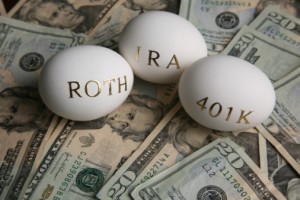U.S. Long Term Capital Gains Rate up to 23.8%
Most of you know that the U.S. long term capital gains rate went up from 15% to 20% for high income individuals. I’ll bet quite a few will be surprised by an additional increase of 3.8% on just about all types of investment income for “wealthy” Americans.
Effective January 1, 2013, the Obamanation tax increase imposed a new levy on net investment income of 3.8%, which is to be used to shore up our failing Medicare system. This surtax generally applies to investment profits of individuals, estates and trusts with incomes above the statutory threshold. This threshold amount for a single taxpayer is $200,000, and $250,000 in the case of married couples filing joint. The threshold amount for estates and trusts is a mere $11,950 for 2013.
The thresholds for the Medicare surtax are imposed independent of the $450,000 and $400,000 thresholds under the American Taxpayer Relief Act of 2012 that set these as the starting points for a 20% long term capital gains tax rate. These taxes are paid with your personal tax return, Form 1040.
The Medicare surtax defines net investment income very broadly. It encompasses many types of income, such as interest, dividends, capital gains, rental and royalty income, non-qualified annuities, income from businesses involved in trading of financial instruments or commodities, and businesses that are passive activities to the taxpayer (partnerships and LLCs are passive investments unless you are involved in the day to day operations).
Here is how the long term capital gains rate and Medicare surtax work at their most basic level:
- If you are in the 10% or 15% (low income) tax brackets, you will pay no capital gains tax.
- If you exceed the 15% bracket, but earn less than $250,000 married filing joint, your long term capital gains tax rate is 15%. In other words, the 15% rate would continue to apply to taxpayers in the 25%, 28%, 33% and 35% income tax brackets.
- If you earn more than $250,000, but less than $450,000 MFJ, your long term capital gains tax rate is 15% and your investment tax is 3.8%, for a blended rate of approximately 18.8%.
- If you earn more than $450,000 MFJ, your long term capital gains tax rate is 20% and your investment tax is 3.8%, for a blended rate of approximately 23.8%.
For a more detailed analysis, see the Forbes blog or the Wall Street Journal.
For the American abroad, it is important to remember that you are required to pay U.S. tax on your worldwide income, which includes all passive and investment income. The only deduction available for passive income is the foreign tax credit, which should eliminate double taxation on investment income, but does not reduce your net tax below the U.S. rate.
Also, the Foreign Earned Income Exclusion does not affect your U.S. tax bracket, nor does it reduce your adjusted gross income amount, which is used in calculating your capital gains rate.
For example, if a husband and wife are living abroad, each qualifies for the FEIE, and each earns a salary of $96,000 for 2013, they will pay zero U.S. Federal Income tax on their salary. However, their adjusted gross income for determining capital gains rates will be $192,000, and their long term capital gains will be taxed at the blended 18.8% rate.
This also means that every dollar earned in excess of the FEIE is taxed at the 28% or 33% tax rate. Your tax rate does not start from zero after taking the FEIE consideration.
Please contact us at info@premieroffshore.com if you would like us to prepare your U.S. personal or business tax returns. We are experts in the tax laws applicable to American’s living and working abroad.












Leave a Reply
Want to join the discussion?Feel free to contribute!